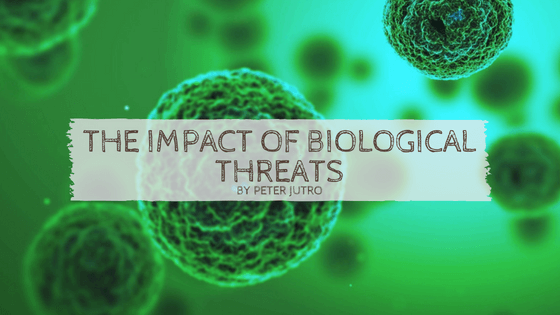If asked to picture the world’s worst disasters, most people think of phenomena such as hurricanes, floods, tsunamis, volcanic eruptions, and earthquakes. Such events are foremost in our mind for a reason: they are supremely observable, and we have seen them. The waves and winds of typhoons ravage hundreds of miles of coastline. Strong earthquakes topple buildings by the thousands. We picture hurricanes, and imagine dark clouds rolling. We almost hear the thunder and all but feel the cutting breeze.
Not all catastrophes are so obvious; some are sly and insidious. They creep under the radar of human senses, and power their way into our lives. And when they reveal themselves, it’s often too late to avoid, or even stop them. Debilitating bodily symptoms are the calling cards of disease. Such effects come about more subtly than an avalanche or tornado, but are just as ruthless in their destruction. Even today, infectious disease poses a biological threat which cannot be overstated, or overlooked.
The Spanish Flu of 1918 proved that even a relatively common disease such as influenza can wreak havoc across the globe. In The Great Influenza: The Story of the Deadliest Pandemic in History, historian John M. Barry traces the origins of a deadly strain of flu to rural Kansas. From there, the flu would spread to claim as many as 50 million lives worldwide. Barry argues that America’s preoccupation with World War I led to unsanitary conditions for traveling soldiers, which–along with a stronger than usual flu strain—established the foundation for catastrophe. Because of their fixation on issues abroad, Barry concludes that authorities failed to take preventative measures at home, and as a result, a quarter of the US population fell ill, and 1.5 million died.
In her book, FLU, veteran science writer Gina Kolata explores the disparity between the Spanish Flu’s severity and its light coverage in medical and historical records. Kolata carries her analysis further, chronicling modern scientists’ search for an intact specimen of the 1918 virus. They found the flu buried under Alaskan ice, and in tissue samples taken from its victims and stowed away in a government warehouse. After studying the strain’s structure, researchers concluded that another deadly flu was certainly possible. Such an event was likely averted, according to Kotala, when scientists and policy makers acted quickly in response to a 1997 outbreak of avian flu in Hong Kong’s chicken populations that threatened to mutate into a strain that would affect people.
The problem of rapidly mutating viruses isn’t going away. To solve it, or at least address it more effectively, will require a comprehensive response, as indicated in Emerging Viruses, a collection of essays edited by Columbia professor of epidemiology, Dr. Stephen Morse. Hope is far from lost, however. Advances in molecular biology and epidemiology have given us the tools to analyze past virus/host interactions, and track the development of new viral strains. Morse’s anthology provides a wealth of case studies exemplifying this, as well as suggestions on how to prevent future outbreaks.
It’s difficult to predict whether the day will come when diseases no longer plague humanity. But, by combining our past experience with present technological advances, we can direct our preventative efforts with far greater precision, and hopefully at least minimize such biological threats.

